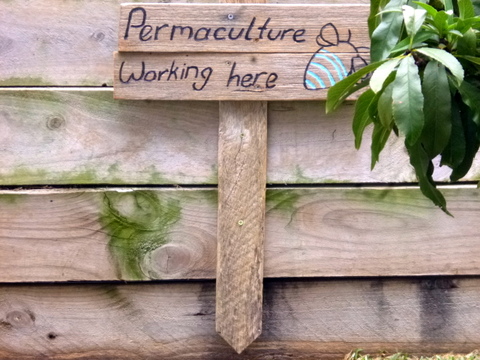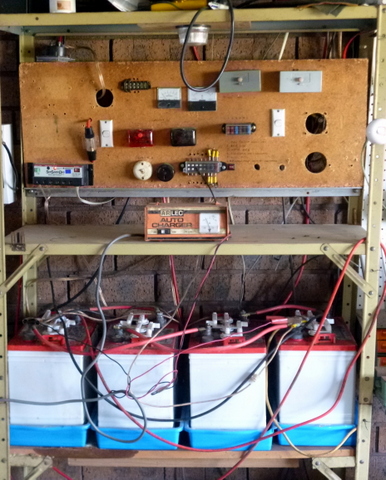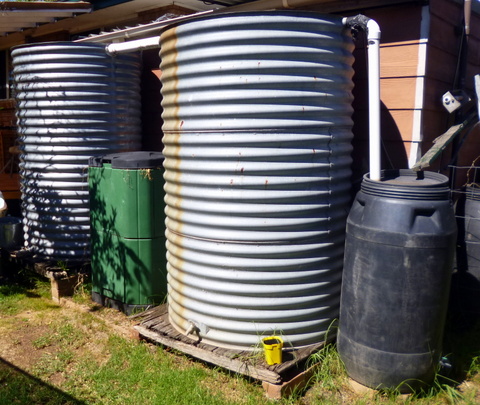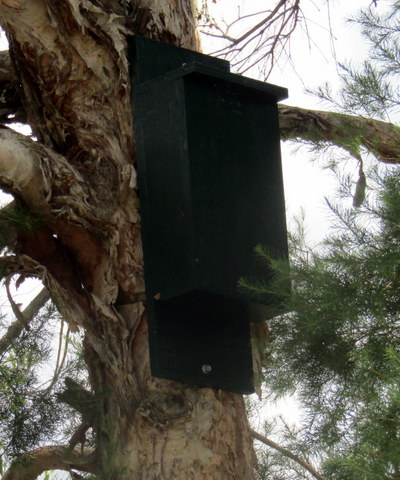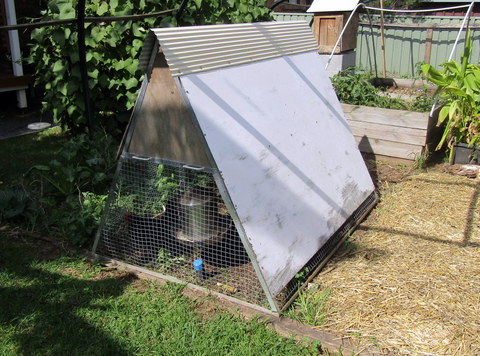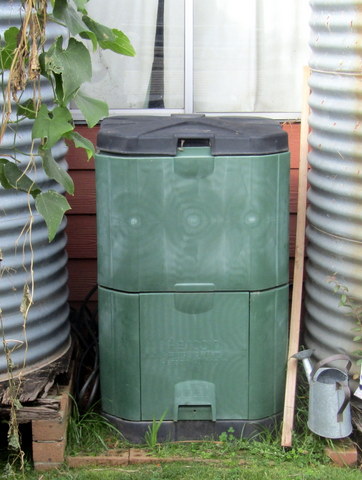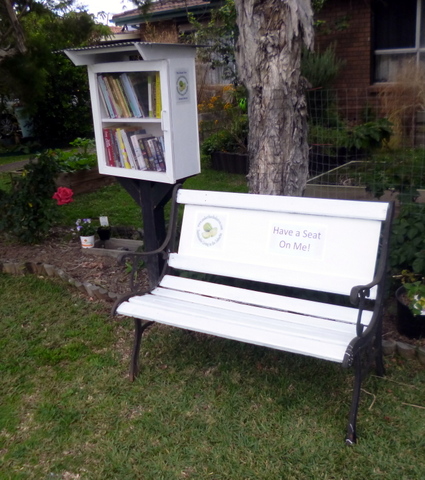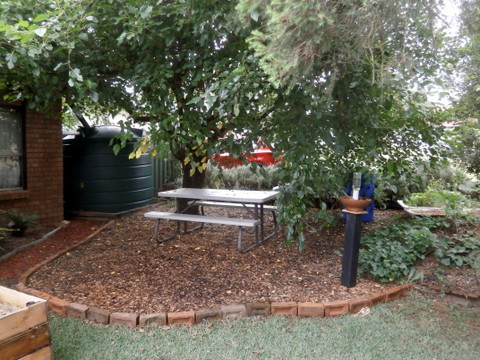Last Review: 13th September 2023
This document came out of the Choko Tree planning process which started with developing a mission statement, then working through the process to implementation. This is a living document in that it will be regularly reviewed and updated, with any actions arising out of it being transferred to the To-Do List. Elements with actions still outstanding will have notation at the end as being 'ongoing', which will be changed to 'completed' once all actions are finalised.
Implementation & Planning
• Develop Implementation Plan
To implement the strategies a plan needs to be drawn up. The plan should identify the actions required to implement each part of the strategy and an estimation of cost and time required for implementation. A to-do list has been created to bring all of the actions together and is published on the website but there has been no work done on resources, timing etc.. (Not Started)
• Develop a Needs and Yields ‘Map’ for the site
While there are needs and yields analysis for some of the elements, there is no overarching one for the site. This would point out any opportunities for improvement where an unsatisfied need in one area can be covered by an unused yield in another. While it would be good to have a holistic map for the site, it may be too complicated and have to be broken down into sections such as food, water, energy etc. (Not Started)
• Set up system to allow identified information to be recorded
• New focus on clothing
After some research it has been brought home to me the environmental problems associated with clothing production, buying, maintenance and storage, especially in association with fast fashion. There has been some small inclusion of clothing related subjects but these were restricted to the 'crafts' section of the website. With this new information, the planning section (including the Sustainable Lifestyle Assessment Matrix and a Sustainable Household Clothing Audit tool) has been updated and/or developed to reflect the requirements to address clothing issues. There has also been a separate 'Clothing' tab implemented to highlight clothing related articles, and articles about clothing are being written and uploaded regularly. (Completed)
Energy Goal: Our energy requirements will be, captured, developed or generated on the property.
Our Energy Strategy to deliver the goal
• Conduct energy audit
This is first on the list for good reason, it helped us determine our position regarding energy consumption – how much of what energy source we used – which then enabled informed decision making so we could tackle the greatest area of energy consumption first. We did it a few years ago and found it very enlightening! (Completed)
• Research ways to reduce energy consumption
Our greatest area of energy consumption (as I expected) was electricity, followed by gas, followed by wood. A lot of reducing energy consumption can be behavioural. No cost involved but habits can be challenging, especially the habits of other family members! There are other strategies we implemented, like building and using low energy/alternative energy appliances such as a stored heat cooker, solar oven or rocket stove which we have and use. (Completed)
• Replace grid supplied with renewable energy generated on site
This is an expensive one, and it took a while to get it working efficiently, but it all seems to be working well with solar panels, 3kw inverter and associated electronics. our original system only supplied enough power for our (12v) lights and the 12 volt fridge. The new system supplies all of our power needs for most of the year. Cloudy days a month either side of the shortest day can cause problems and we still have the grid connection as the most cost effective back up The system works well and has allowed us to expand our option when excess solar electricty is available. We do have a 1 kW back to the grid set up and have had for 10 years or so but with the feedin tarrif currently available for the electricity it produces does not contribute much to the household economy. (Completed)
• Provide electricity storage
This has been done in the form of two, 24 volt, nickel iron battery banks which will see us out and probably be still in use by our grandkids. (Completed)
• Cooking with solar electricity
With extra solarelectricty being available over an above that needed to run the house we have re-aquired some electrical appliances which we originally got rid of, like a slow cooker and rice cooker. We have also got hold of some new ones to take advantage of this extra supply, such as an egg cooker, induction cooker and table top oven.The oven in particular is smaller and better suited to our needs as a couple, it runs very efficnetly and means we rarely fire up the gas oven any more. Also, the induction cooker (portable, single burner) is very efficient and considerably reduces our reliance on the gas burners for most of the year. Recently we have aquired a breadmaker which allows us to bake bread during the day even in midwinter. (completed)
• Investigate biomass energy options
During winter we heat and cook with a Nectre bakers oven slow combustion stove, some of the fuel we are able to source from local and more or less sustainable sources (trees being cleared, dropped limbs etc.) but the majority we have to buy in from a commercial seller. There is considerable work to be done to allow us to reduce our reliance on this type of firewood. Another possibility is to look at constructing an ‘oil drip’ system to use waste vegetable oil as an adjunct to burning firewood, reducing its use. (Not Started)
• Find ways of ameliorating high summer temperatures
With the rear of our house facing west, the Western Sydney summer sun bakes us, and it is getting worse with temperatures in excess of 45°C last (2016/17) summer. By working out ways to combat this it will make our lives less frazzled in summer and reduce our reliance on air conditioning, which is NOT powered by the photovoltaic system, but powered directly from the grid. The last summer (2017/18) had temperatures up to 47°C but a combination of isolating the northern end of the house and installation of bamboo (outdoor) blinds and the deck on the western side of the house to form a cool refuge reduced our electricity usage from 5 kwHr/day (mostly aircon) down to 2 kWHr/day – a drop of over half! (Completed)
• Install solar hot water
This is another high expense investment, but it has the best payback period of the big energy stuff. We have had solar hot water in place for over 35 years, originally using a thermosiphon flat plate collector system, which has since been replaced with a more “intelligent” active solar evacuated tube system. (Completed)
• Introduce Low Energy Cooking
Various techniques have been developed and are used as required including, solar oven, rocket stove and stored heat cookers. With the development of the solar power focus on energy saving has changed from electricity to gas, resulting in the re-introduction of a rice cooker and several slow cookers to take advantage of extra solar electricity available. (Completed)
• Investigate options for active solar heating and cooling
Currently heating is biomass, with a small amount of passive solar heating, cooling is provided by pulling in cold air through the windows and, when it gets too much, air conditioning. Strategies to be investigated include a means of pulling cool air from under the house into selected rooms and heating by dragging air through a solar heater into the house. (Not Started)
• Insulation
The ceiling is insulated with fibreglass batts, but there is currently no insulation in the walls of under the floor. After much research it turns out that to install insulation in the walls could only be done by removing the gypsum board making up the walls, with the insulation then being installed. It would also require at least some rewiring of the house because the current wiring is designed to lose heat into the open air and insulating it may result in a fire. Due to attendant costs, this idea has been shelved. It was considered that underfloor insulation in the lounge room would reduce heat lost to the underfloor area in summer and this was more important than keeping warm in a mild and short winter, so underfloor insulation will not be conducted. We have polystyrene boards which are inserted on the inside of the windows in the rear of the house which has proved to be very effective in keeping out the summer heat on the western side of the house. Bubble wrap has been appliedto several windows and is working well. (Completed)
• Cooking with Solar electricity
With the installation of the solar electricity system, we have again gotten hold of some electric cooking appliances to make use of excess electricity, these have been specifically a rice cooker and slow cooker. A free-standing induction hotplate has been obtained for summer cooking and to help with bottling of excess produce, reducing the requirements for the gas stove and is working well. A stand-alone electric oven has also been obtained and used reguarly, reducing the usage of the gas oven. (Completed)
• Build and install rocket oven
We have recently become aware of the possibility of retrofitting an unused oven to be heated by a rocket stove set up. I don’t know much about it yet so I will need to research what is required, obtain a discarded stove (gas or electric) and other fittings, decide on a location for it, then put it tighter. I have obtained some documentation on building a rocket oven, and the oven itself (a pick-up from the side of the road) but that is it. Due to various things going on in the background, including the lack of a cheap source of fuel, this project has been shelved. (Completed)
• Research and build biochar stove
I have recently discovered the concept of the biochar stove, which uses solid fuel to produce heat for cooking but also as a by-product, produces biochar for use in fertilising the annual veggie patches. More research is required to determine the best type of stove and obtain plans for building it. (Not started)
Water Goal: All rainwater falling on the property will be captured, we will reduce our consumption of town water to as low a level as possible.
Our Water Strategy to Deliver the Goal
• Conduct a water audit
In the same way that the energy audit let us work out and address the energy hogs in our home, a water audit let us know the big water consumption areas so we could address them first. We had already done quite a bit of water demand reduction when we did our first water audit but it showed fairly conclusively that the productive garden areas (back and front yard) were the big water users. This needs to be redone to confirm any new findings (Not started)
• Install water efficient irrigation for fruit and vegetables
This was a big action coming out of the water audit, so that we installed various types of water efficient irrigation including ollas, buried capsules or buried pipe in each of the veggie patches and deep tube, buried pipe and a little bit of porous pipe for the perennials (herbs and fruit trees and bushes etc). Wicking beds and deep reservoir self-watering containers are also in use. (Completed)
• Install rainwater water storage tanks
Our first water tanks were installed over 40 years ago. Another 5,000 litre has been installed recently giving a total of 16,000 litres rainwater storage. A connection between the downpipe on the southern side of the house has been made with the roof of the carport so that water can be channelled from the stormwater drains to the new tank. Also a new 3000l tank has now been installed beside the garage giving us a total of 19,000 litres of rainwater storage. (Completed)
• Install rain chimneys, swales, permeable paths to store rainwater in the soil
In heavy rain we get some runoff into adjoining properties in the backyard and towards the road in the front yard. With a goal of keeping stormwater on the property, as well as using water tanks we are implementing some measures to store water in the soil. One experimental drain chimney has been completed. With the stormwater now overflowing from the new 5000litre and 3000litre tanks into back yard at the rear of the garage the original drain chimney is no longer enough, so a new, larger one has been installed at the lowest point of the back yard. (Completed)
• Rain garden
The concept has been developed but there is still design work to be done and a location to be determined, plants have not yet been worked out. (Not started)
• Introduce behavioural changes to reduce consumption
The usual behaviours (short showers, filling up the dishwasher, washing full loads etc.) are in place but a review of effectiveness would be valuable. (Completed)
· Construct system for using rainwater from the gutter to irrigate some food plants
We use the tank water regularly for garden duties, but do not have any direct supply to the house. I want to design and install a system which takes water from the 3000 litre tank next to the garage and plumbs it direct into the house where it can be used as potable water. (Not Started)
Food Goal: Our food will be produced organically sufficient to contribute to two meals a day for the two of us.
Food Strategy to Deliver the Food Goal
Sub – Strategy 1: Grow Edible Plants Year ‘Round
• Rotating annual vegetable beds
The basic vegetable production using 14 vegetable beds planted and harvested serially in a two week rotation has been developed and implemented. (Completed)
• Perennial vegetable beds
Perennial beds for chokoes, Jerusalem artichoke, rhubarb and asparagus beds are completed and in production. A review of the possibility of other perennial vegetable crops would be valuable. (Ongoing)
• Herb spiral
The herb spiral (wedding cake) is in place and yielding well (Completed)
• Fruit trees (including fruit tree circle, banana circle)
Fruit tree circle, banana circle and other fruit trees and berries are in place and yielding, but a fruit harvest calendar needs to be revised to ensure coverage for the year. (Not Started)
• Water Gardens
Two water gardens are in place, yielding arrow leaf and water chestnuts, pickerel rush and acting as water sources for wildlife. (Completed)
• Edible “Weeds”
Edible weeds growing in the area have been identified and integrated into recipes regularly in use. (Completed)
• Fungi - Indoors
Commercial mushroom boxes have been used with variable success. Mushroom box home made with commercial spawn got to the “pinhead” stage and then stopped growing. work is currently ongoing to grow oyster mushrooms, using the bucket method with variable succes. Current research and trials are focussed on using mycelium from the previous batch of mushrooms to grow another batch without having to buy more spawn which proved to be successful. Both oyster mushrooms from scratch and button mushroom kits are now grown with success. (Completed)
• Fungi - Outdoors
Reseach and trials on growing edible mushrooms outdoors under trees are to be conducted. (Not Started)
• Develop and Utilise Pollination & Predator Services and increase biodiversity
Self-watering bird bath and insect waterer are in place and the bug hotel is in place and in use. The insectary bed in the front yard has been replanted and a waterer installed in the front yard. Vegetables allowed to go to seed in vegetable patch to attract pollinators/predators. Native garden is in place and growing slowly. Native bee hive has been installed, two microbat roosts are in place a home made microbat roost has been added, a frog hotel has been conctructed and installed. Four gabions made with urbanite have been installed to increase biodiversity. (Completed)
• Grow food off site
We are nearing saturation levels for food growing on the site, and there are some crops such as oil and grain crops which require more land than we can commit to, to get a meaningful yield. While some initial work has been done, this s some way away from realisation. (Not started)
• Grow food indoors
Growing food indoors does overlap with some other strategies (mushrooms, sprouts, and insects) but a review needs to be carried out to identify other potential food growing areas using the Area tool. It is likely that only areas requiring supplemental lighting will be identified so research needs to be carried out to identify and design a system to grow food under lights which suits our house. As part of this process, soil sprout growing also need to be considered. (Not started)
• Grow food vertically
Some food is grown vertically already on trellises near some of the veggie patches (snow peas, Malabar spinach, cucumbers), in cylindrical trellises in veggie patches (tomatoes, cucumber, peas) and against the house (passionfruit, grape). New systems have been developed to allow growing in hanging baskets and to grow fence pumpkins and loofas. The strawberry tower has been relocated and refurbished. (Completed)
• Review veggie plan
The vegetable sowing plan was developed over 10 years ago and while there have been minor revisions over the years there needs to be a complete review to ensure we are getting the best out of our system. The increase in hot weather over summer has resulted in not getting much yield from brassicas planted to be productive over summer, where we used to get some yield. The review has been completed and the new plan is in place. (Completed)
• Review Techniques of fertility Maintenance
The main process for maintaining fertility of the primary growing beds is the use of the chook tractor to provide chook manure to each of the grow beds in turn. In addition to this, several years back all beds received a dressing with rock dust and individual plants have been provided with liquid manure from the comfrey extracting tube. Perennials in the front yard are fertilised with the worm tower and application of fertiliser sausages made by rolling up hessian bags filled with manure Fruit trees are also being fertilised with diluted urine, particularly citrus. All back yard grow beds have been pH tested and returned a result of between 6.0 and 7.0. An overall review of current fertilising practices has been carried out. Actions arising include development of a fertiliser program and record, inclusion of biofertiliser and rockdust in the program. (Ongoing)
• Seed Saving
Seeds are currently open pollinated and obtained from a mixture of sources including commercial, seed savers and home saved. Home saved seeds include peas, beans, corn, tomato, lettuce, and bok choi. We have probably gone as far as we easitly can with home seed production and while we will keep up with our own seed supplies, there is a need to focus on other things as well. (Completed)
• Research Options for installing Sunken vegetable Gardens
During research around soil improvement I came across the concept of sunken gardens, as opposed to raised beds, which can make optimum use of water, provide a better environment for plants and soil biota and give plants some protection from drying winds. They are designed for arid (hot dry) areas, whic is what the summers in western Sydney are starting to look like. More research is needed to determine if they are suitable for our area and if so, how they can be implemented. (Not Started)
• Develop processes for food storage, bulk buying etc to provide some back up supplies and reduce packaging
We have developed strategies over the years to ensure some backup food and other supplies were available in the event of any interruption to supply. The current system uses a combination of bulk buy (organic grains, flours and skim milk powder), semibulk of other materals like different rices, and dried legumes, home processing of grown and bought in staples like tomatoes and some canned and bottled staples bought in as well as whole spices grown and bought in. These are used in combination to make food items like bread, flatbread, yoghurt, pizzas and other baked goods, spice mixes and other foods from scratch which previously were bought in. Using 'No-Buy July' for several years has helped us to refine our system so that when lockdowns due to Covid 19 were introduced it was just 'business as usual' for us. (Completed)
Sub – Strategy 2: Develop Protein Sources
• Chickens
Chook tractor has been implemented for many years and is on its 4th generation, it is functioning well providing eggs as well as fertilisation and cultivation of the annual veggie beds. Aging chickens are placed in the retirement village where they break down and manure straw ready for use as mulch. Some eggs are provided in spring and where there is a need they can be placed inside a moveable fence and used for cultivation as well. They’re not used for meat. (Completed)
• Quail
Quail house has been completed. A new quail house with three quail (1 male & 2 females) has been obtained and installed. The quails have since passed on, and will not be replaced, we will concentrate our efforts on the chooks (Completed)
• Farming Non-traditional protein sources (snails/insects) for consumption
Black soldier fly larvae setup (biopod) is not currently in use. The biopod is to be set up to allow self-harvesting of insect protein by the chickens. (ongoing)
Work has been done on raising crickets for consumption by the chickens and us. The process has worked well and proved to be selfsustaining once started. All equipment has been obtained and its use explored. The process has currently been suspended due to my requirement to work outside our home, and will be reinstated when I have more time. (Completed)
• Aquaponics
This idea was discarded after initial work (construction of fish area and grow beds) due to high (I calculated an increase of 46% on the electricity requirements at the time) energy requirements. With the new energy system being implemented this needs to be revisited. After being reviewed it has worked out that the solar electric system would not be able to provide sufficient electricity to run the pump for at least the month or two each side of the shortest day (22nd June) so this idea has to be shelved again. (Completed)
• Vegetable Proteins
Due to the limitation of land size it is not feasible to provide all required vegetable protein. Experiments have shown that one crop of red kidney beans is possible, providing almost one kilo of dried beans, but in the last year it has been shown that we are able to get two crops of black beans in within the growing season, providing over 1 kilo of dried beans. This contributes to protein supplies of the household while adding nitrogen to the soil as well. (Completed)
• Move towards vegetarian diet
Out of a theoretical 21 meals per week we do an average of 2 to 3 which contain meat. We have no real desire to become complete vegetarians or vegans (especially as we produce our own eggs) but reducing our meat consumption has impacts in our waste and food spheres of influence particularly. It has a dramatic impact on the sphere of producing our own protein. At the moment there is no intention of reducing our meat consumption further than this. (Completed)
Sub-Strategy 3: Food Preserving
• Drying
I have built two solar food driers, one small, cheap direct drier and one larger and more complex offset drier. The offset drier saw considerable use when we used to grow bumper crops primarily in spring and summer. Now this drier is only used for special drying projects, drying leaf crops and the odd bumper crop. (Completed)
• Bottling
We regularly bottle yearly supplies of tomato sauce and diced tomatoes, sourced from a mixture of our own produce, local growers and more distant organic growers. We use a combination of new jars bought about 5 years ago and repurposed jars accumulated over the years. We do buy in some new lids as older ones become unserviceable. Our previous power source has been gas but we have recently obtained an induction cooker to enable us to make use of abundant summer solar electricity to sterilise the empty bottle and lids and to process the full jars. (Completed)
Waste and Consumption Goals
Waste: We shall aspire towards producing zero waste
Consumption: We shall eliminate excess and unnecessary consumption
Waste Strategy to Deliver the Waste Goal
• Conduct waste audit
A waste audit was originally conducted years ago but needs to be revisited in the light of new behaviours to determine if any opportunities have been missed. This has been conducted and work done to cover new issues discovered. (Completed)
Sub- Strategy 1: Organic Waste
• Composters
Two Aerobins in place to accept organic waste and are working but breakdown of organic matter is slow and cockroach infestation is a problem. Review completed, the aerobins are to be replaced by a three bay composting system, when the aerobins will be removed. The three bay composting system has been installed and it in use, just awaiting removal of the aerobins. (Ongoing)
• Worm farms/towers
The worm bath (worm farm), worm tower in the centre of the fruit tree circle and chooks (tractor and retirement village) can accept organic waste not placed in the Aerobins. Both in place and working. (Completed)
• Tree trimmings
Tree trimmings and some other organic waste is sent off site via green bin. This needs to be reviewed to see if they can be treated (eg by shredding with current or new shredder) and used on site. This could be done using PSWs petrol shredder. These will be included in the three bay composting system (Ongoing)
Sub-Strategy 2: Waste Water
• Composting toilet
The toilet has been constructed and sited and a material sourced to be added to assist in composting, but the system is not used at the moment. A design for a solar toilet has also been sourced and this needs to be reviewed for feasibility. We have been capturing urine, diluting it and using it on the citrus trees (Ongoing)
• Banana circle
Banana circle is in place and currently used to treat greywater, compost organic matter and produce bananas, in place and working well (Completed)
• Constructed wetland
The constructed wetland is used to treat greywater for the washing machine and provide water for two trees, also papyrus has been removed and added to rot down in the banana circle. (Completed)
Sub-Strategy 3: Other Waste
• Use re-usable carry bags
In most cases reusable bags are taken when buying materials not able to be produced, bags are left in the car for the same reason. Performance could be a bit better but is improving with time. (Completed)
• Use re-usable containers to replace other plastic bags
Re-usable bags for buying of produce and other things need to be sewn and used. Containers/reusable bags for buying meat etc which are usually provided in plastic bags need to be made/sourced and used. This system is now in place and working well. (Completed)
• Introduce bulk/ethical buying
We now buy most pantry staples (flours, rice, oats, wheat, etc) in bulk as well as many smaller requirement pantry goods either bought packaging free or home made from packaging free ingredients. Ethical buying of bulk meats has been rendered a non-issue by our move towards a vegetarian diet, and has been reduced to irregular buying of smaller amounts of free range chicken. (Completed)
• Provide unwanted items to salvation army/PSW/ friends & neighbours
In place and working well. (Completed)
• Towards Zero Waste
So far we have identified opportunities for bulk buying and implemented those where they made sense. We take our own shopping bags, produce bags and containers when shopping for food so we can avoid plastic waste. We have put together a zero waste go kit to reduce plastic waste when we eat out. A more holistic plan to achieve zero waste needs to be completed. (Ongoing)
• Towards Plastic Free
Detailed information has become available on the toxic nature of most plastics (some more than others) for us and the environment, which I was not aware of. Some work to achieve the zero waste goal has resulted in a drop in plastic usage, it has not been a declared goal and so any improvement has been incidental. A holistic, but realistic plan is to be developed to achieve a reduction in plastic usage as much as possible, starting off with a pantry audit to focus on plastic food packaging, followed by a more general plastic audit and reduction plan. (Ongoing)
Sub-Strategy 4: Reducing Consumption
• No-Buy July
To reduce our consumption levels and focus on building production capacity and skills, we have implemented No-Buy July. For the month of July each yearwhich has now been completed) we focus on doing whatever we can for ourselves, using our existing resources using a combination of home harvest, shopping in the pantry, practicing existing skills and learning new ones. At the end of the month we review what we learn and then continue activities that help us work towards our consumption goal. (Completed)
Community Goal: We will work within our community to help others live more sustainably.
Community Strategy to Deliver the Community Goal
• Permaculture Sydney West membership
We are both members and are on the committee for PSW, and are very active in providing information and instruction to members. (Completed)
• Open Days
We currently open for International Permaculture Day and Sustainable House day every year and have become skilled in preparing and running tours for these open days, although with the advent of Covid19 theses have had to be temporarily suspended. Taking part in the Sydney Edible Garden Trail occurred in 2022 and will occur in 2023 (Completed)
• Web presence
The website has be up and running for almost 10 years, an article is added every week along with freely downloadable resources where appropriate. There is also a Facebook page and YouTube channel dedicated to providing sustainable living information. (Completed)
Recently we have developed and implemented an Under the Choko Tree facebook group to allow contact with like minded individuals and to selectively republish existing articles as well as the normal weekly article. (Completed)
• Start a monthly Street BBQ
While I am keen to start this, the Covid virus has short circuit ed any plans and nothing will be able to be completed until this is resolved, hopefully later in 2021. (On hold)
• Establish a community newsletter
This will be done in conjunction with the street barbecue idea above, so is also currently on hold. (On hold)
• St Clair sustainability group
The group has been active for 10 years, with varying attendance, some attendees being local but some drawn from greater western Sydney area. Meetings were held via ZOOM initially but the legacy of Covid was that the group was eventually disbanded. A free eBook has been published on the website detailing how we started and ran the group and is available for download. (Completed)
• Street library
The street library has been designed and built, and has been functioning for over 6 months. Usage has been weekly at least from locals and others. (Completed)
• Street Pantry
To enable excess produce to be shared with neighbours and passers by, a street pantry has been constructed and installed underneath the street library. Useage of both the street pantry and library continues, but is erratic. (Completed)
• Offer low cost sustainable living courses to the local community
Courses have been established for use and we have all the equipment to run them but more work needs to be done to develop a venue then publicise them. This also has been impacted by Covid restrictions and so has been placed on hold. I have recently become aware that insurance companies can refuse to pay a claim if you have a home business, even if the business is not associated with the claim. I have decided not to pursue this income stream (Completed)
• Set up "Meet The Street" virtual get togethers on ZOOM
Due to the continuing issues with Covid19, the envisioned street barbecue and other activites has had to be put on hold. However, I recently came across the idea of virtual get togethers on ZOOM and so I am developing this idea with the idea of getting it up and running soon. This idea has been abandoned due to attempted implementation of other ideas. (Shelved)
• Develop and implement WhatsApp Group for the street
The group was developed and fliers sent out to all neighbours in the street, with some dicussion occurring and the general agreement that this was a good idea, unfortunately, to date, no one has joined the group. (Completed)
· Harvest yourself beds
We are currently developing two bath tub based wicking beds near the front of the front yard to allow people to pick their own leaf and other perishable crops. This has now been completed and signposted, we are awaiting for it to be used. (Completed)
Livelihood Goal: We will generate our income ethically.
Livelihood Strategy to Deliver the Livelihood Goal
• Workshops for PSW
Currently programs are developed and run with 5 local councils through PSW to provide income as the councils require it. (Completed)
• Workshops at home
Courses have been established for use and we have all the equipment to run them but more work needs to be done to develop a venue then publicise them. As mentioned above I have decided not to pursue this due to difficulties with insurance. (Completed)
• Sale of E-books on the Internet
We now have over a dozen eBook completed and available on the website, several others are in preparation, there has been no attempt to sell them on the net. With the opportunity in early 2021 to do paid work outside our home (in my chosen field) the income from this source is no longer required, we are making these available via this website for no charge. (Completed)
• Sale of Advertising on YouTube Channel
YouTube channel and been activated and videos are being added each week. We have now got over 2100 subscribers. A donation option has been set up through PayPal but this did not provide any income and has been removed. I am currently struggling with the idea of this one, considering my love for YouTube advertising and at the moment income from this source is not needed, I have decided not to run with this (Completed)
• Manufacture and sale of ethical products in-house
Work needed to identify products and determine their economic feasibility for sale, but will not be carried out due to above insurance issues. (Completed)
Amenity Goal: We shall continue to develop the property to make it more liveable.
Amenity Strategies to Deliver the Amenity Goal
• Back lawn
In a permaculture design, an area allowed to remain as lawn can be seen as unproductive, but is an ideal area for children (kids, grandkids etc) to play in safety. There may be some minor incursion into the current lawn area but the current intention is to allow it to remain as a play area and area for picnics etc for the adults. (Completed)
• Front park area
The area in front of the house, under the mulberry tree, has been covered with wood chip and seats provided as well as a child’s swing installed. This area has also had the strawberry tower and biopod but these have been removed and the area set aside for recreational purposes. (Completed)
• New path in Front Yard
A path is needed to be installed between the front path and the front park area. As well as improving access it will allow rainwater to be absorbed and reduce the amount of grass in the front yard requiring mowing. This has commenced using recycled pavers from a neighbour having them removed, we are yet to install the cardboard and the wood chips. (ongoing)
• Declutter the House
Over the years we have accumulated a whole stack of stuff that we no longer use (or never did use) so we are now going to go through the house, garage and sheds one room at a time and remove excess materials which will be given away or recycled. Several sheds have been done but there is lots more to do. (Not started)
• Tiny house
In place of the original shed in the backyard a small tiny house is to be constructed from recycled materials. The area is currently covered in pallets and the first thing to be done is to set out the floor. For this to get up and running it will require an injection of cash which is currently not available. (On hold)
• Set up blacksmithing forge in garage
The forge is currently located on a brick base in the garage, but another course of bricks needs to be installed, the materials for the shroud and flue have been obtained and are now installed, the 12 volt supply and foot switch have been wired into the fan. (Complete)



